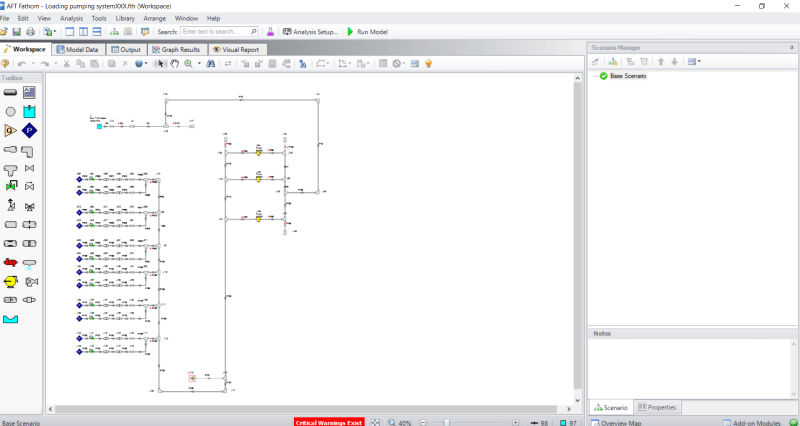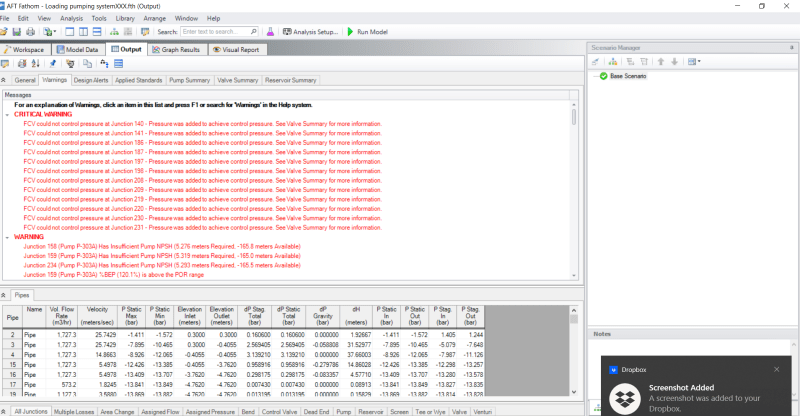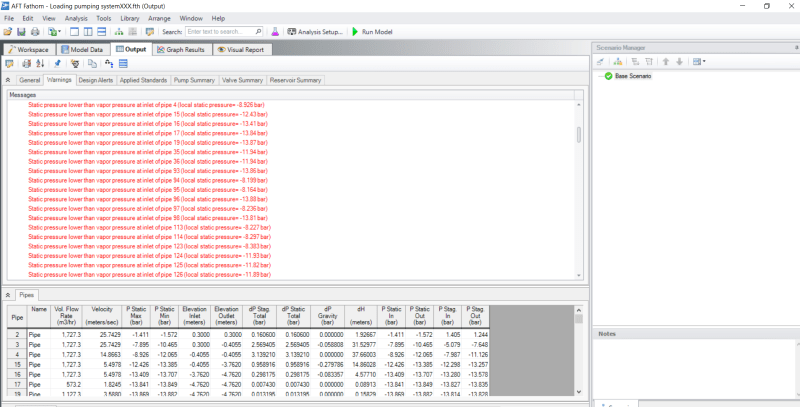davincigee
Mechanical
- Oct 28, 2012
- 50
Hi guys,
I have a bit of a problem with a system I've been analyzing these past few days. Please see attached images. The system consists of a tank feeding to 3 centrifugal pumps (pumps are at an elevation below -5m of the tank foundation). These 3 pumps rated at 576cu.m/hr discharge 12 loading arms at a flowrate of 2400l/min. My problem is whenever I simulate the system model on AFT fathom or PIPENET, there's alway seems to be less NPSH available to the pumps. However when I run just one pump feeding just a third of the loading arms(4 arms) there isn't any issue with NPSHa. Infact I obtain ample ie 11m. Can anyone please tell me what is going on? I've always thought that NPSHa is not affected by pumps in parallel configuration.
Tank level = 0.6m (this is in sizing for a pump in a worst case scenario)
Suction pipeline length =580m
Discharge pipeline length = 440m.




I have a bit of a problem with a system I've been analyzing these past few days. Please see attached images. The system consists of a tank feeding to 3 centrifugal pumps (pumps are at an elevation below -5m of the tank foundation). These 3 pumps rated at 576cu.m/hr discharge 12 loading arms at a flowrate of 2400l/min. My problem is whenever I simulate the system model on AFT fathom or PIPENET, there's alway seems to be less NPSH available to the pumps. However when I run just one pump feeding just a third of the loading arms(4 arms) there isn't any issue with NPSHa. Infact I obtain ample ie 11m. Can anyone please tell me what is going on? I've always thought that NPSHa is not affected by pumps in parallel configuration.
Tank level = 0.6m (this is in sizing for a pump in a worst case scenario)
Suction pipeline length =580m
Discharge pipeline length = 440m.




